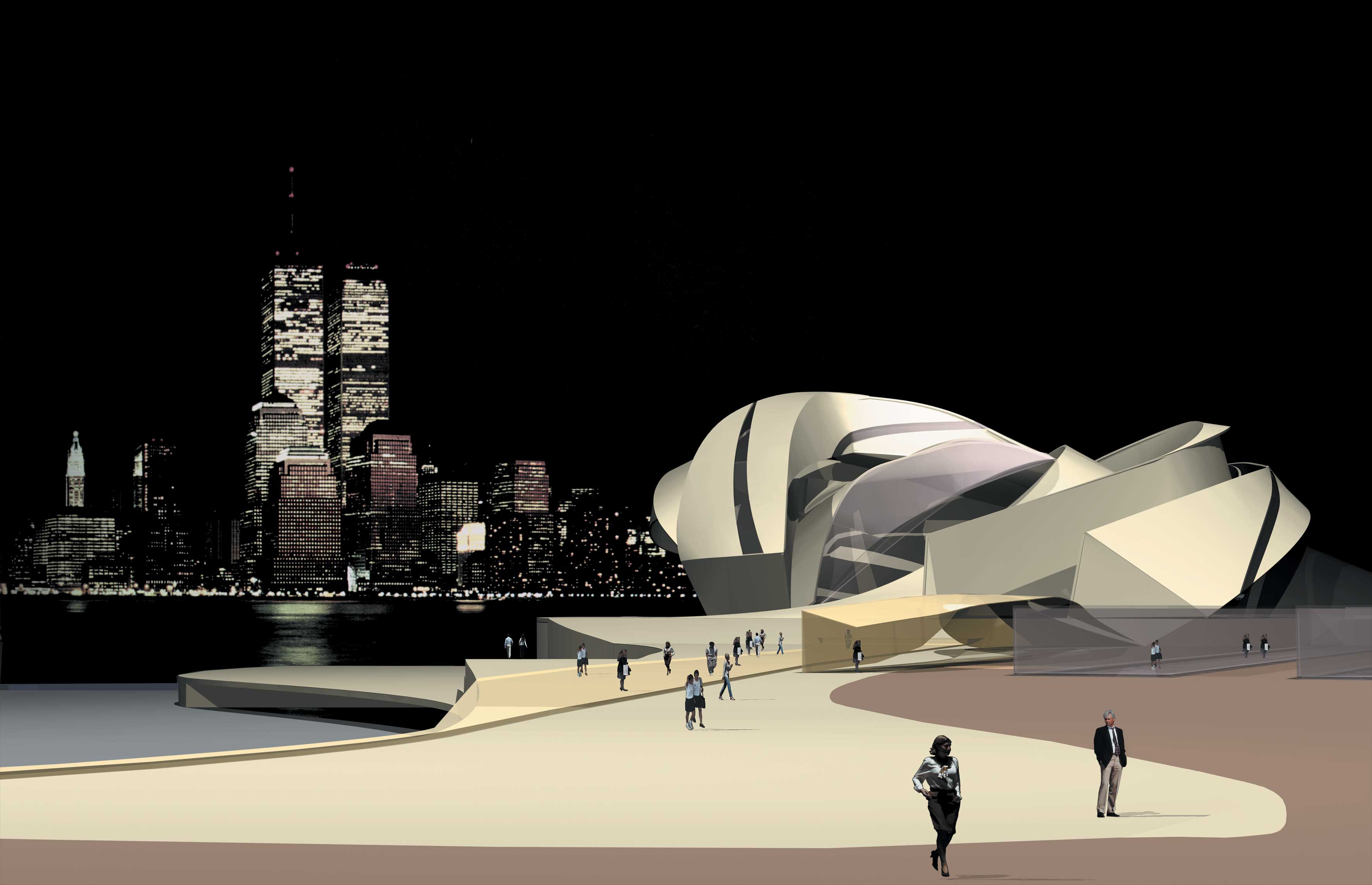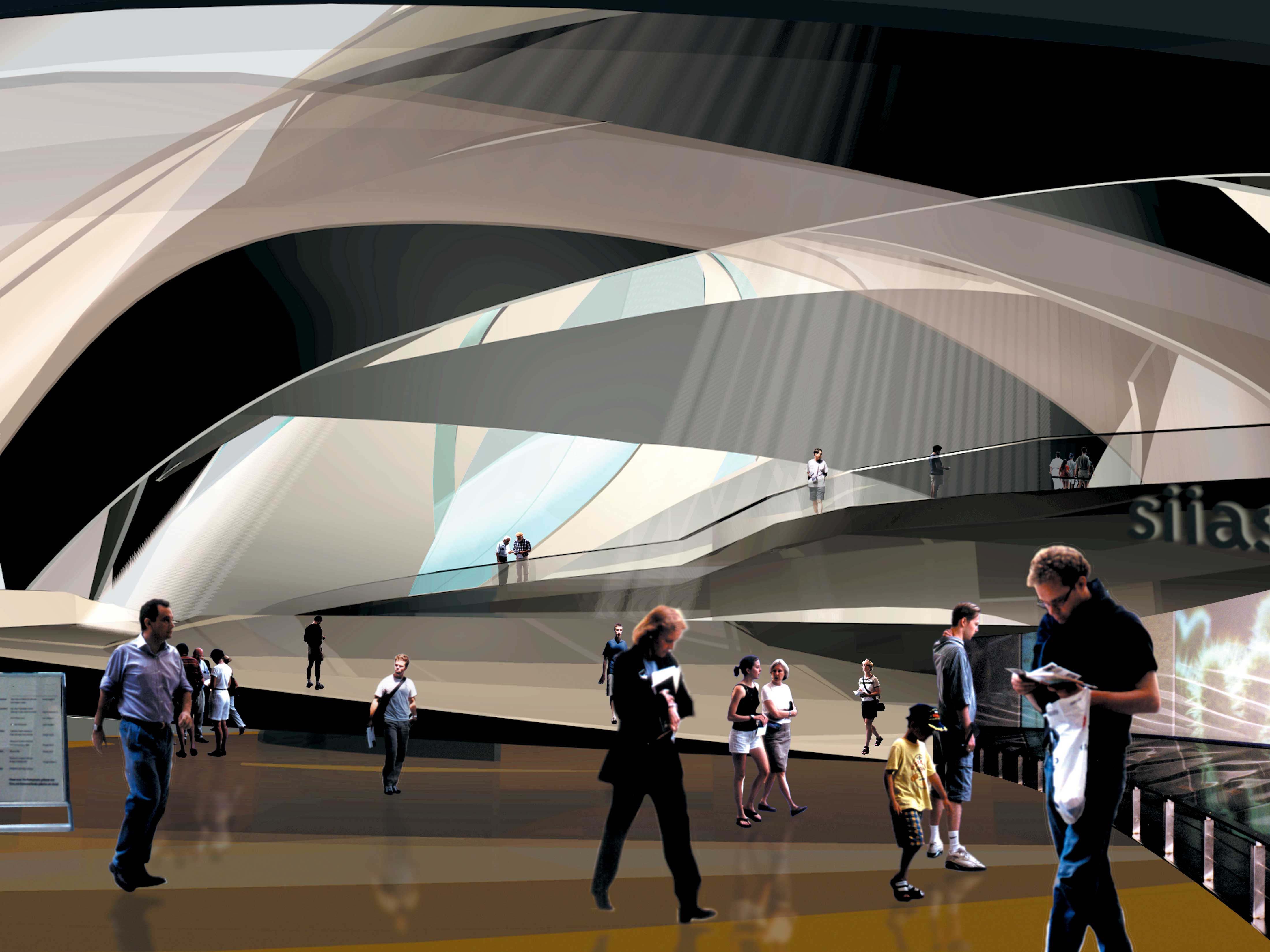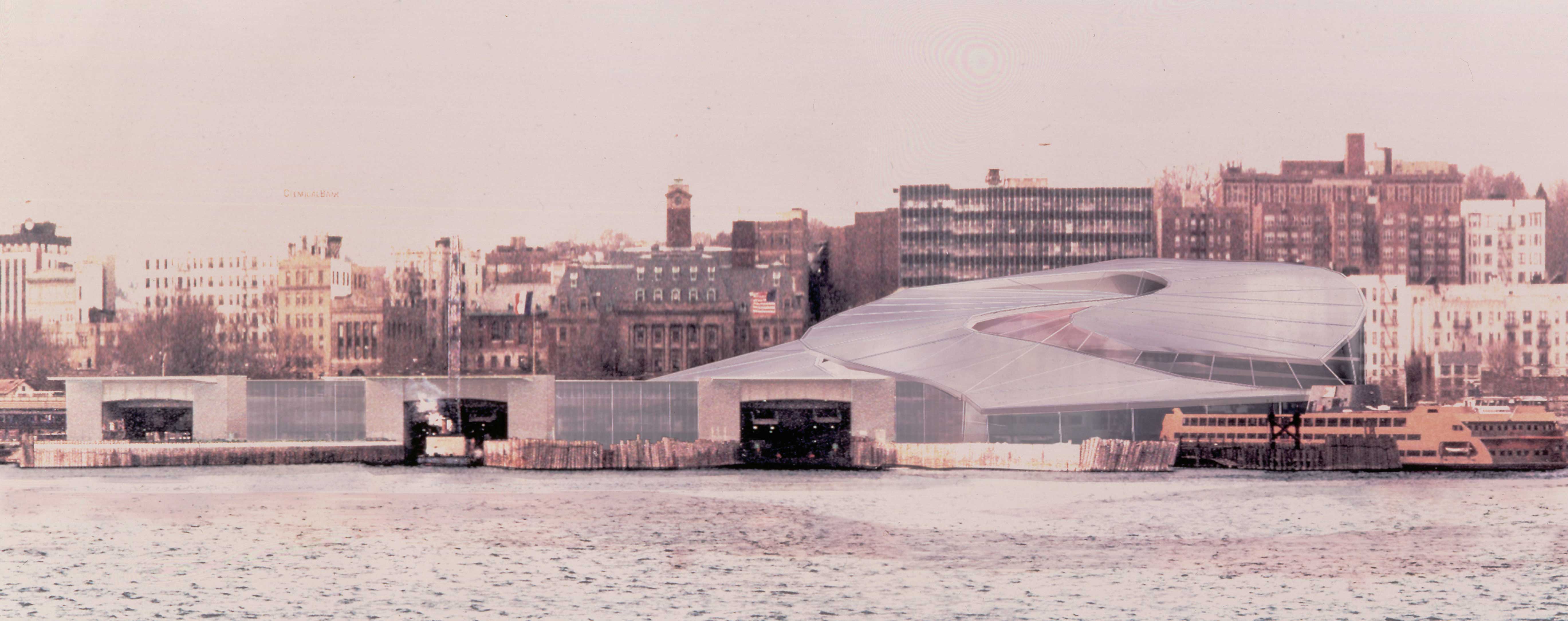
STATEN ISLAND INSTITUTE FOR ARTS AND SCIENCES
Location: St. George, Staten Island, New York
Year: 1997-2001
A primary gateway to Staten Island is the St. George Ferry Terminal, a principle hub of intermodal transportation and an unprecedented opportunity to enhance the physical, cultural, economic, and technical fabric of New York City. As the terminal undergoes restoration and renovation, this natural tourist destination becomes a magnet for cultural development. The new museum for the Staten Island Institute for Arts and Sciences, located beside the terminal, not only takes advantage of the potential audience of an annual twenty million commuters passing through the terminal, but also provides a real reason for tourists to disembark from the ferry and spend time on Staten Island.
The Swirled form of the new museum is derived from the liner axes typical of museum, which, through a process of warping and striation, become torqued into centroidal mass. This seemingly centroidal nature is deceptive, however, for while the striations twist into a centroid structure, that structure differs in essential ways from the centroid spaces of Frank Lloyd Wright’s New York Guggenheim and Frank Gehry’s Guggenheim in Bilbao.
The Staten Island Institute for Arts and Sciences appears to be similar in organization to both Guggenheims because it seems massed toward a center, but the visitor in fact moves across the warped striations and is denied any continuous spiral. If anything, these striated forms owe their pedigree to Robert Morris’s “Hanging Felt Pieces” or John Hejduk’s fishtail forms in his Berlin Masque. Here, the smooth nature of the space is striated by deep, V-shaped sections that begin to define a series of interlocking layers of space. The spatial experience becomes an incomplete narrative, a destination without a proscribed end.
Concept
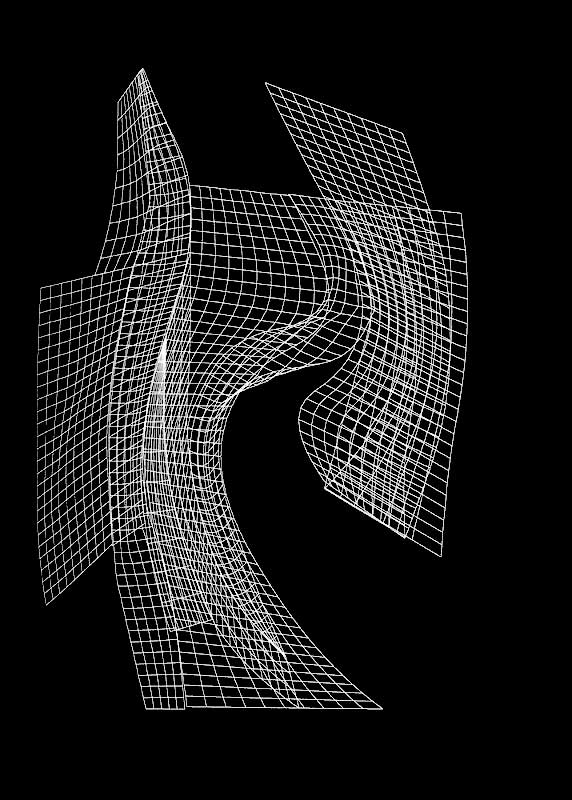

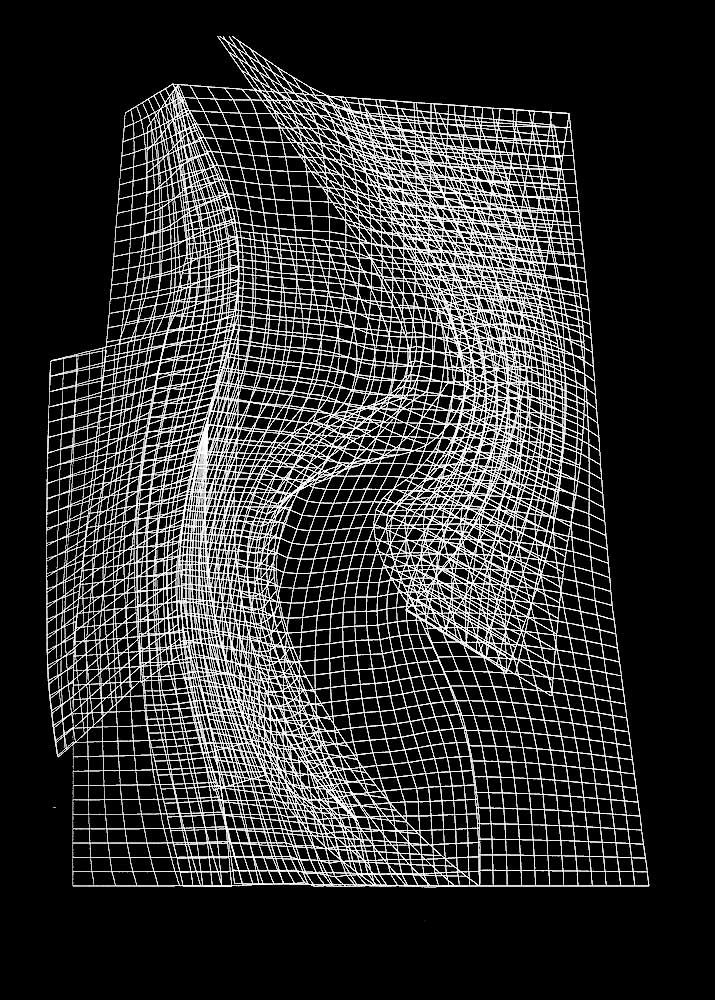
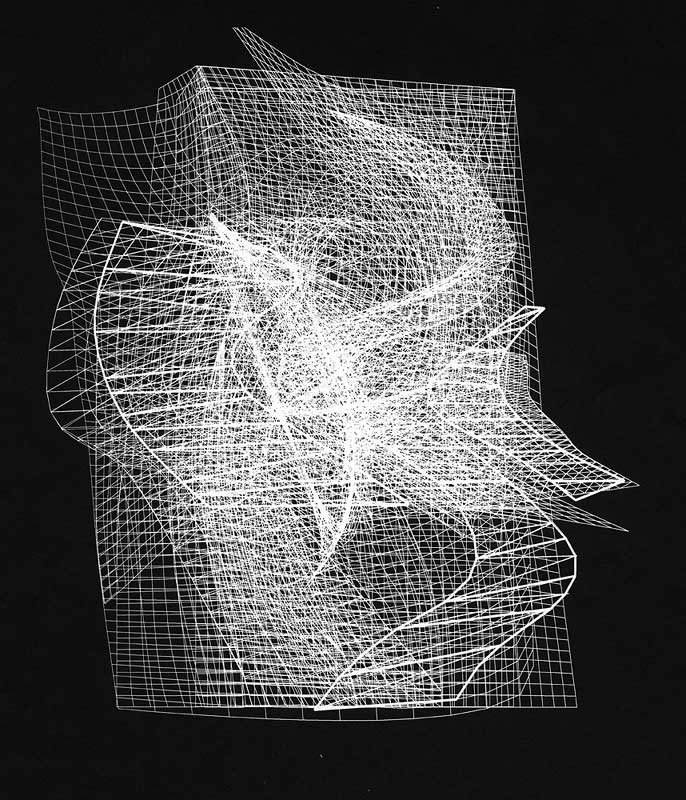
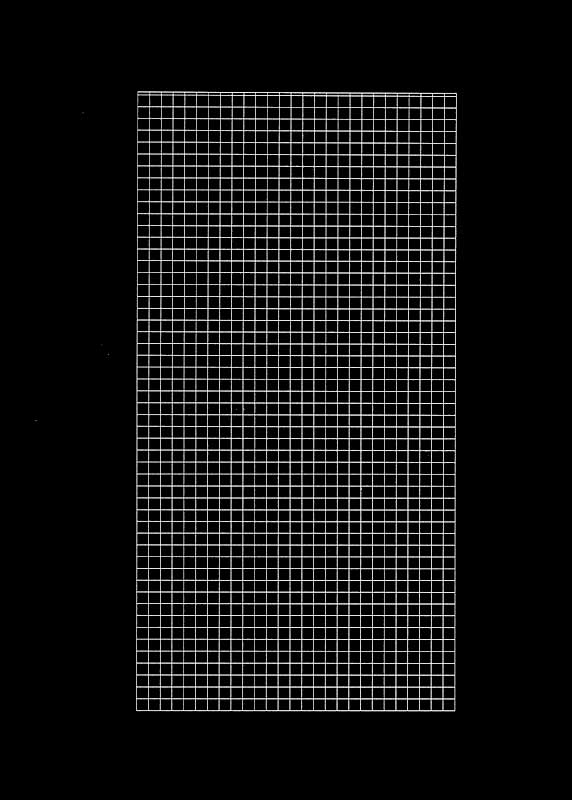

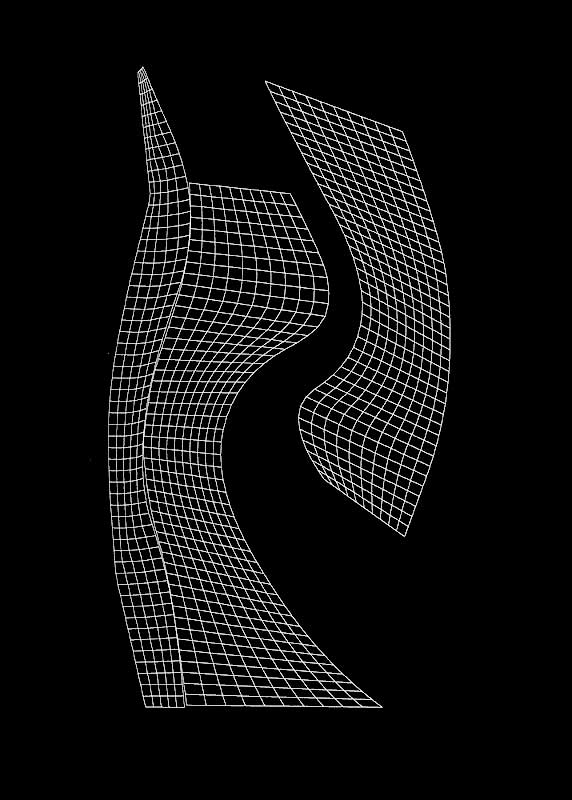
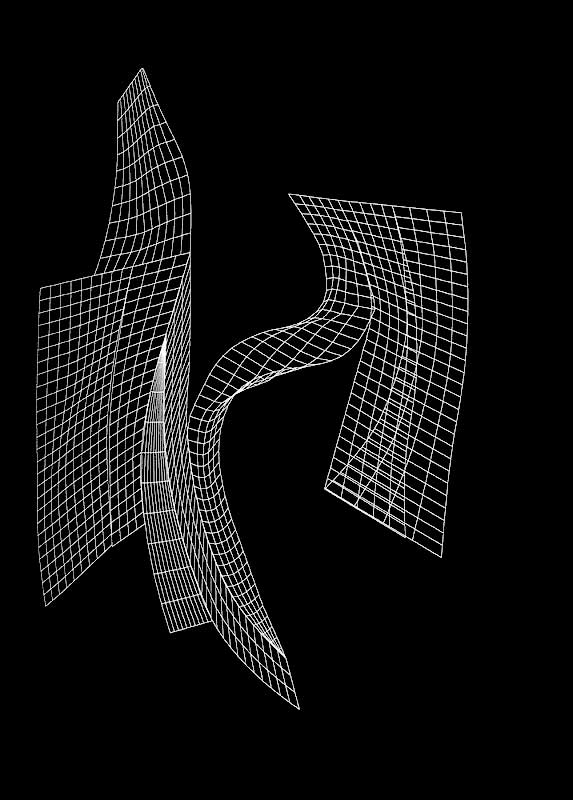

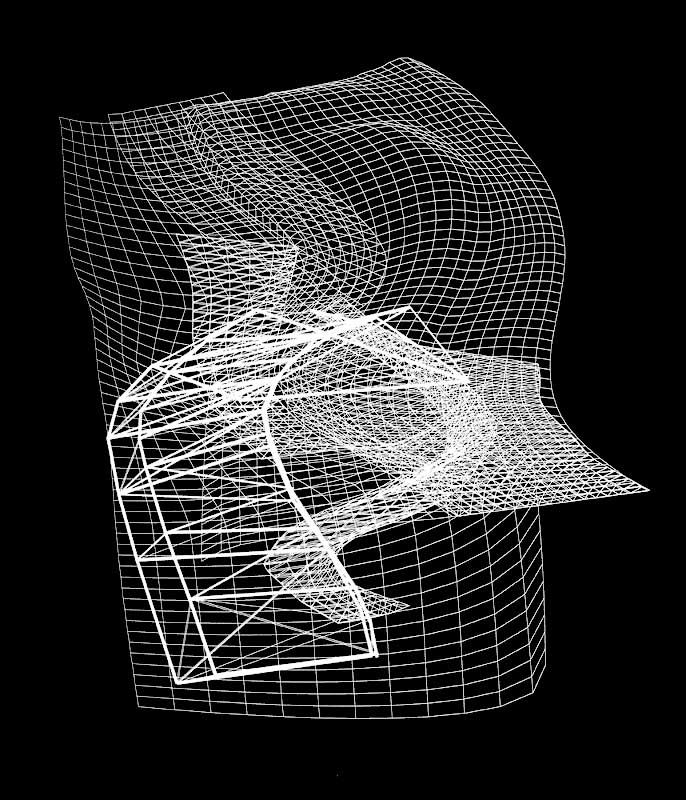
Drawings
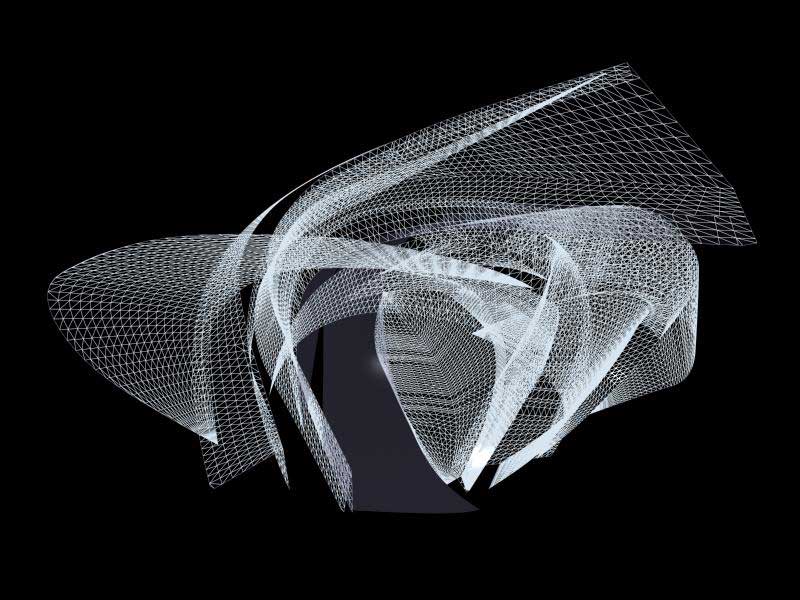


Model photos
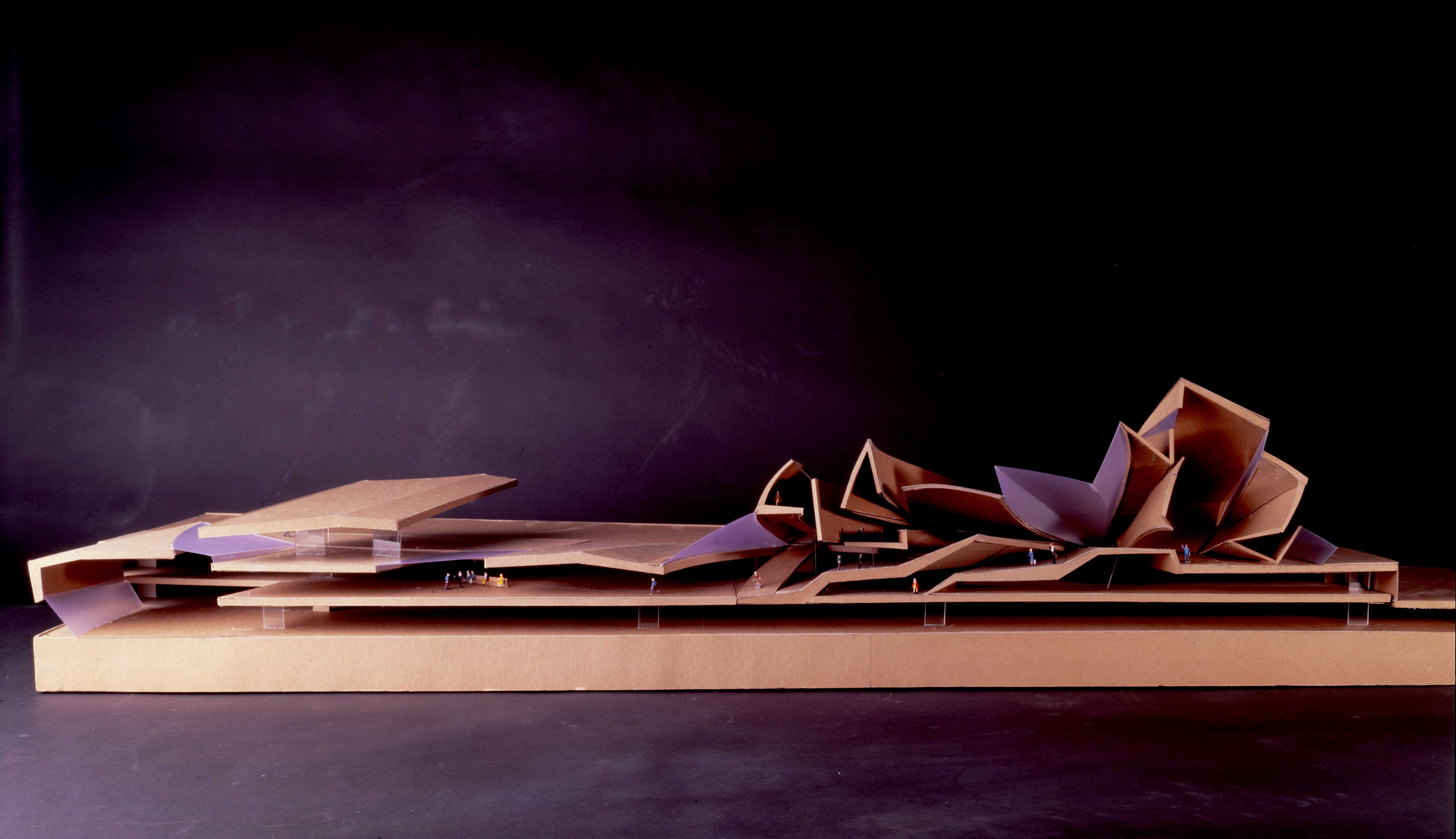



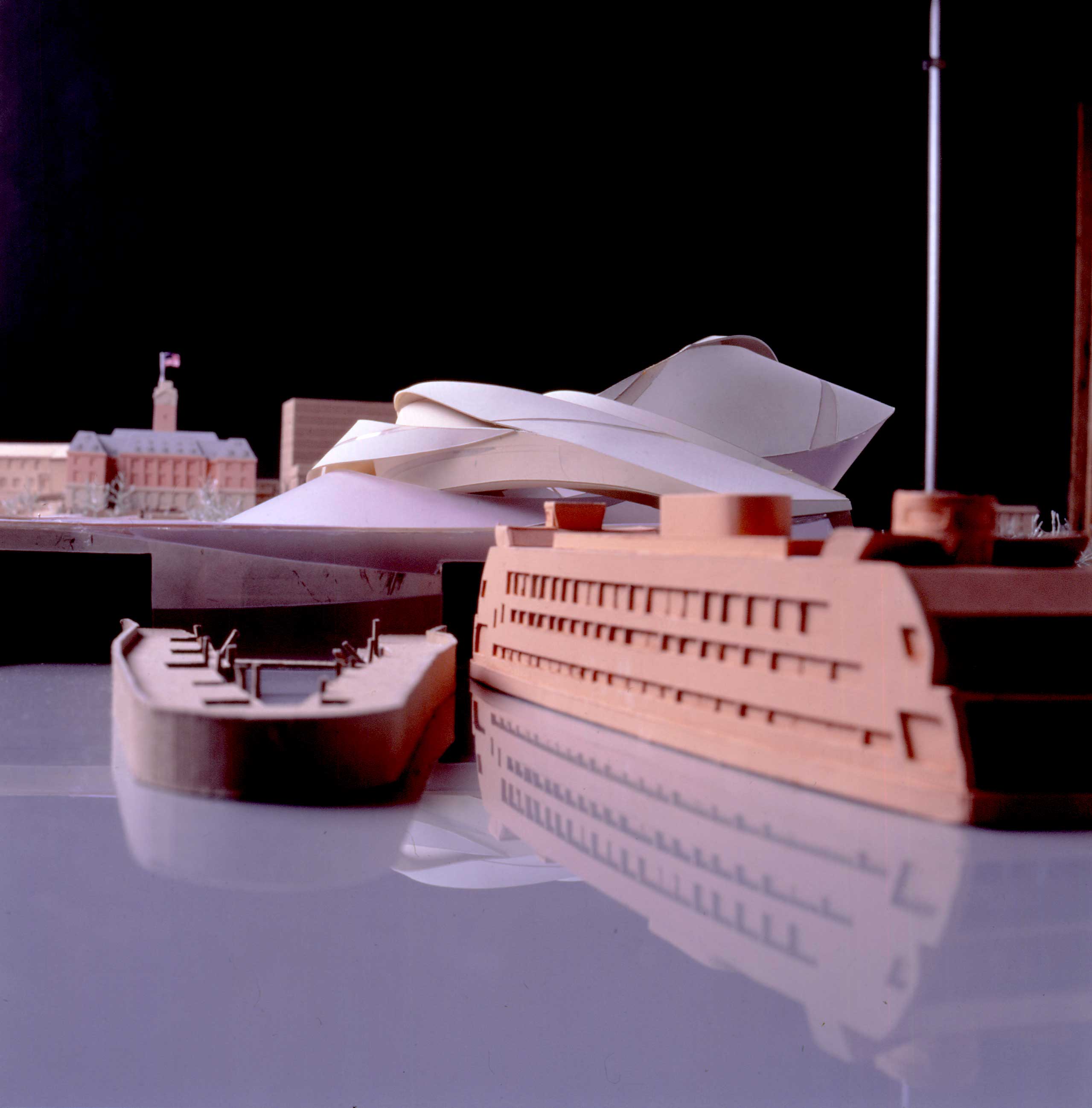
Images
